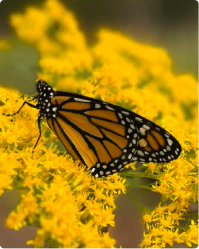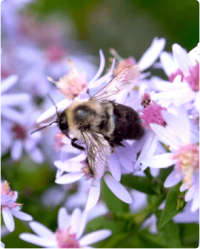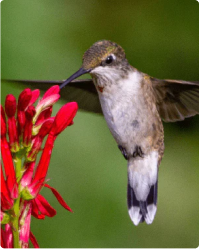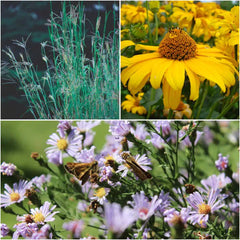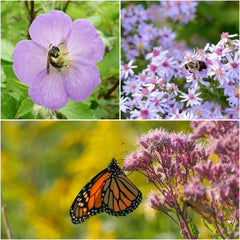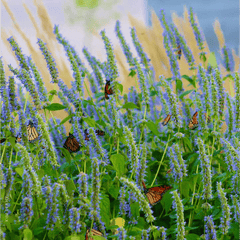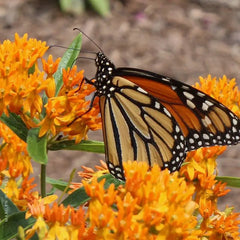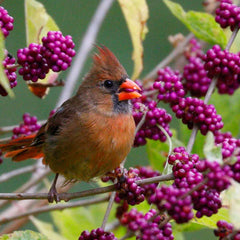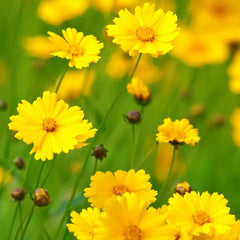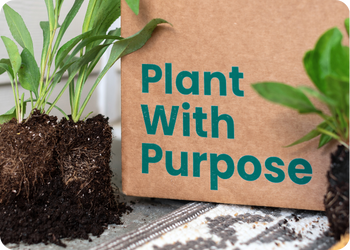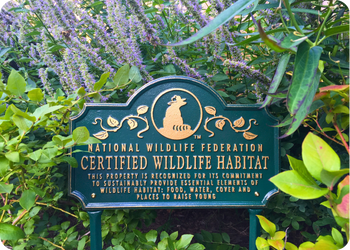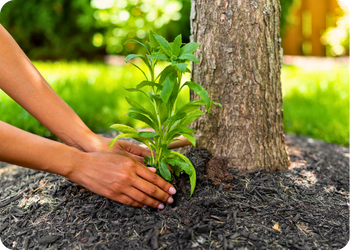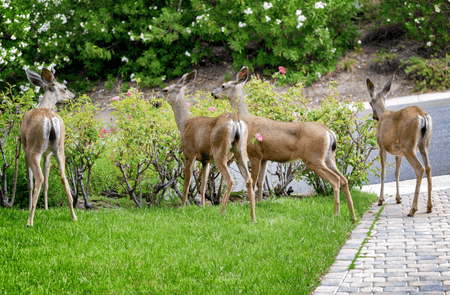Guide to Native Plants and Sunlight

@gardenforwildlife Just like we need the sun to thrive, so do plants! ☀️ However, too much sun can be just as damaging to plants as it is to people. That's why it's important to know how much and what type of sun your plant needs for the ideal growing conditions. By providing your plants with the right amount of sunlight, you can help them stay healthy and vibrant all season long! Learn more in our newest blog post linked in our bio. #NativePlants #GardenForWildlife #PerennialPlants #PollinatorGarden #Wildlife ♬ Cooking Time - Lux-Inspira
Many people don't realize that different plants have different sun requirements. Just like we need the sun to thrive, so do plants! However, too much sun can be just as damaging to plants as it is to people. That's why it's important to know how much and what type of sun your plant needs for the ideal growing conditions.
By providing your plants with the right amount of sunlight, you can help them stay healthy and vibrant all season long! Here’s what you need to know.
The basics of sunlight and plants
Every gardener knows plants need sunlight to grow, but have you ever wondered what they do with all that sun? For starters, plants use sunlight to create their food. This process, called photosynthesis, is how plants turn sunlight into the energy they need to survive. Not all plants require the same amount of sunlight, however.
Some plants, like sunflowers, thrive in full sun, while others, like ferns, prefer shady conditions. When choosing plants for your garden, be sure to consider how much sun or shade each one needs. Too much sun can damage leaves, while too little can prevent a plant from getting the energy it needs to grow. By giving your plants the right amount of sunlight, you can help them stay healthy and thrive.
Top Tip: Native plants are a good choice for your garden because they are already adapted to the local climate.
How will I know how much sun a plant needs?
When you're out shopping for plants, it's important to know how much sun or shade they need to thrive. If a plant doesn't get enough sun or shade, it could become sunburned or damaged. That's why, at Garden for Wildlife, we make it a point to let you know whether a plant needs full sun, partial sun, partial shade, or full shade. That way, you can be sure to give your plant the care it needs from the start.
Some native plants require full sun, while others do better in part shade. So, if you're unsure what you need, just ask us! We'll be happy to help you find the perfect plant for your garden.
Understanding the terminology of plants and sunlight
When shopping for plants, you'll often see labels indicating how much sun the plant needs. The options are usually full sun, part sun, part shade, or full shade. But what do those terms actually mean? Here's the quick answer:
- Full sun: These plants will usually need at least six hours of direct sunlight.
- Part sun: Plants labeled as part sun will require between three to six hours of sunlight every day.
- Part shade: These plants will also need between three to six hours of sunlight per day but will also need to be protected from more intense sunlight at midday.
- Full shade: As you’d expect, these plants will generally need fewer than three hours of direct sunlight a day.
Let’s take a closer look at what those terms mean for you and your garden.
Full sun
Have you ever gotten sunburned? Chances are, it happened when you were in the sun for too long without shade or protection. The same thing can happen to plants, especially if they're not used to total sun exposure. Sun damage can cause leaves to turn brown and curled and flowers to fade. In extreme cases, sunburn can kill a plant outright. That's why it's essential to know how much sun your plants can handle before you put them in the ground.
When adding plants to a pollinator garden, you should consider the sun or shade each area receives throughout the day. Choosing plants that are tolerant of full sun is especially important if you want to add them to a sunny spot in your garden.
Otherwise, you may find that the plant quickly becomes sunburnt, wilts in the heat, or doesn't thrive. Fortunately, there are many sun-tolerant plants to choose from, including native varieties. So whether you're looking for a flowering annual or a hardy perennial, you're sure to find a plant that will thrive in your garden's sunniest spot.
Of course, as with anything plant-related — always think local. After all, full sun in Ohio and full sun in Texas can be very different. That's why you should always pay attention to label recommendations as a guide and then tailor these to your local conditions. You can also use our native plant finder to ensure you always choose the perfect native plants for your garden.
Part sun and part shade
If you're a plant lover, you probably know there's a big difference between sun-loving and shade-loving plants. But what about those in-betweeners? Part sun and part shade plants fall somewhere in the middle, and they can be a great option for gardeners who want to add a little variety to their landscape.
So what's the difference between part sun and part shade plants? Part sun plants can tolerate some sun, but they prefer shady conditions. These plants are often native to woodlands or forest floors, where they get dappled sunlight throughout the day. On the other hand, part shade plants love the sun, but they can also tolerate some shade. These plants are often native to open meadows or fields, where they get full sun for part of the day.
If you're not sure which type of plant is right for your garden, it's always best to err on the side of caution and choose part sun or part shade native plants. These versatile plants are much more tolerant of changes in light than their sun-loving or shade-loving counterparts. And, if you live in an area with harsh summers or long winters, they can provide your garden with some much-needed relief from the extreme conditions.
Full shade
When most people think of shade, they picture a dark, dreary forest floor far from the sun's life-giving rays. But the intensity of shade can vary. In fact, there's a whole world of plants that thrive in low-light conditions. These plants are known as full-shade plants and can add interest and variety to any garden.
Full-shade plants are typically sun-sensitive, meaning they can be damaged by too much sun exposure. They often have thin leaves or pale flowers that burn easily in bright sunlight. As a result, these plants do best in shady areas where they can avoid sun damage. In some cases, full-shade plants may also require less water than their sun-loving counterparts.
While full sun plants tend to be the showiest and most vibrant, part shade and full shade native plants are often just as beautiful — and they're usually a lot easier to care for. So if you're looking for an easy-care plant that can tolerate low light conditions, consider adding a full shade plant to your garden. You might be surprised by how much these versatile plants have to offer.
How to ensure a plant is getting the right amount of sunlight?
The first step is to learn to recognize the signs of sun damage. Sunburned leaves will appear yellow, brown, or crispy. If the damage is severe, the leaves may wilt or drop off entirely. In addition, sun-scorched plants will often stop growing and producing flowers.
If you notice any of these symptoms, you must take action immediately. One way to protect your plants from further sun damage is to provide them with shade protection. This can be as simple as placing a temporary cover over them during the midday sun or replanting them under a tree or shrub.
Top Tip: Another big difference between sun and shade is the amount of evaporation. If you're trying to plant native plants in a more shaded area, remember that less direct sunlight means less evaporation. This is something to keep an eye on because it's likely that you'll need to water your plant noticeably less than you would if they were spending hours in direct sunlight.
Always consider sunlight when choosing plants
Many people don't realize that the amount of sun your garden gets can significantly affect which plants will thrive there. For example, did you know that sun damage is one of the leading causes of plant death? If your garden gets a lot of sunlight, you'll need to be extra careful about choosing plants that can handle the heat and light exposure.
On the other hand, if your garden is mostly in shade, you'll need to look for plants that enjoy that kind of environment, or you'll risk them dying from lack of sunlight. Always remember that native plants are generally better adapted to the local sun and shade conditions than non-native plants, so choose accordingly.
Whatever sun exposure your garden has, plenty of beautiful and healthy plants out there will do well in it — you just have to know where to look.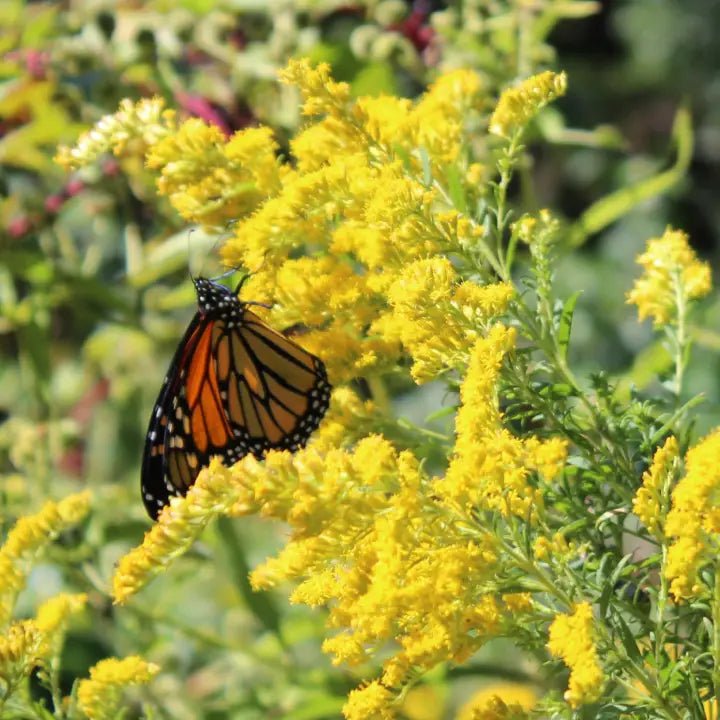
Find Native Plants by Zip Code
We took the guesswork out of planting native. Check your zip to see what ships!
